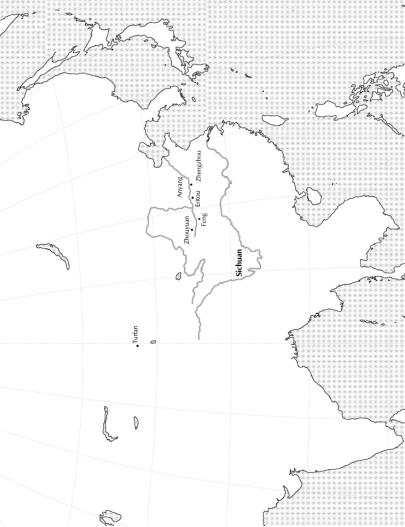1.3: Cultural Variety and Teleology
- Page ID
- 135157
Not only is there no single line of “progress” that puts one culture ahead of or behind another, but also, within the areas that now house the modern nations of China, Korea, and Japan, prehistoric tribes had a variety of lifeways and ideas. No straight line can be drawn from any one prehistoric culture to any modern nation.
Archaeologists in early twentieth century first conceived of “Chinese civilization” as a unified and continuous tradition that spread out from a small “nuclear area.” But excavations disproved this view. Instead, archaeology shows that by about 4000 BC, the Neolithic mainland housed many different tribes and villages. Their lifeways that could be categorized into six larger regional cultures, not just one. They did have relations with one another, so the six were said to form an “interaction sphere.”
Still, archaeologists looked for the contributions that each local culture made to later “Chinese culture.” For instance, like later Shang and Zhou people, the Yangshao people living along the Yellow and Wei Rivers, up to around today’s Beijing and west to today’s Lanzhou, made clothing out of hemp and silk, cooked using tripods and steamers, ate millet and offered it in rituals, and domesticated pigs and vegetables from the cabbage family. A Yangshao temple of 3,000 BC has nine clay pots laid out in the shape of the Big Dipper, a constellation that remained important in astrology and religion. The Dawenkou culture of Shandong had vessels shaped exactly like Shang bronze dou (casserole on a stand) and ding (square tripods). The Daxi culture of the middle Yangzi had dragon designs inlaid in the ground with stones. The Xinle culture of Manchuria made very sophisticated jade objects as far back as 3000 BC. Looking back from the perspective of later Chinese civilization, scholars have tended to select such familiar elements out of early cultures and argue that, in archaeologist K.C. Chang’s words, “By 3000 BC, the Chinese interaction sphere can properly and appropriately be called China, as it became the stage where Chinese history began to play out, with its clearly defined actors, events, motivations, and story lines.”7
But to look at only the elements of the past that seem connected to the present approaches “teleology” – the myth that events and developments are heading towards a pre-determined end. In order to claim, as K. C. Chang did, that the six regional cultures with their many different lifeways were the embryo of Chinese culture, determining its future shape, scholars had to ignore lifeways that did not continue. For instance, the Hemudu people built their houses up on piles above the ground, and cooked food by suspending it in an oven, instead of steaming it. The Yangshao people represented shamans as simultaneously male and female. Scholars have neglected these facts because they lack clear echoes in later Chinese civilization. To study the past scientifically, we have to set aside what we know (or believe) about the end of the story. We must look at all the facts we can get, and think about how the past could have gone differently, in order to see why it worked out the way it did.



